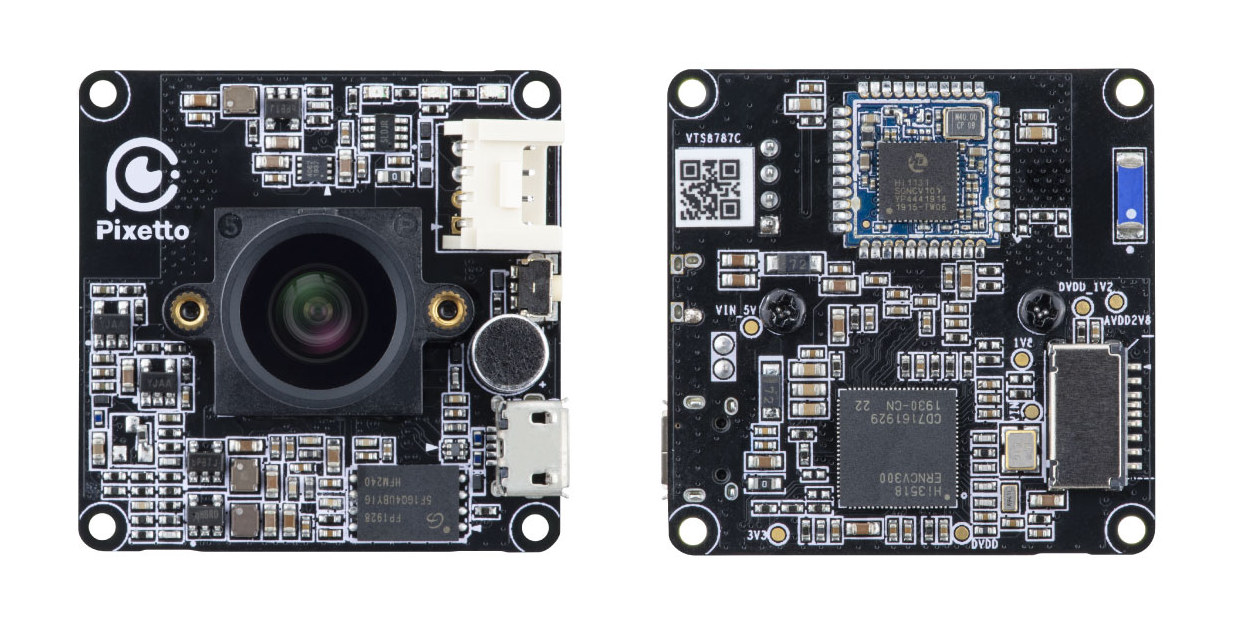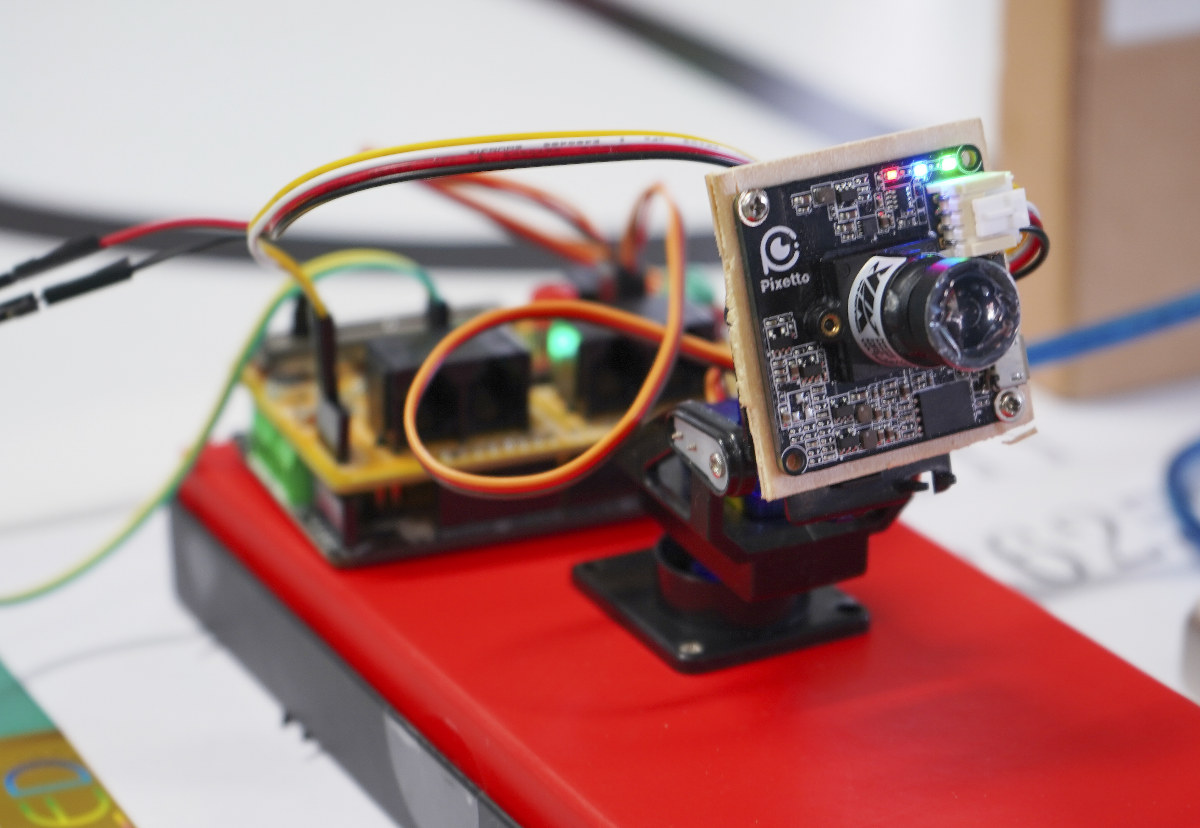VIA Technologies has launched the VIA Pixetto vision sensor aims to teach artificial intelligence (AI) and machine learning (ML) to students aged twelve and above.
The Linux board features an Hisilicon Hi3518E V300 Cortex-A7 HD camera SoC combined with 64MB RAM, 128MB SPI flash, a MicroSD slot, as well as GalaxyCore GC2053 2M CMOS sensor offering 1920 x 1080 resolution and a 130° field of view.
VIA Pixetto hardware specifications:
- SoC – Hisilicon Hi3518E V300 Cortex-A7 HD camera SoC @ 900 MHz with H.264, H.265, MJPEG/JPEG encoder
- System Memory – 64MB DDR, MicroSD card slot
- Storage – 128MB SPI flash
- Camera – GalaxyCore GC2053 2M CMOS sensor with 1920 x 1080 resolution, 130° FoV
- Audio – Microphone
- USB – 1x Micro USB 2.0 port
- Connectivity – WiFi 4 via Hisilicon Hi1131 low-power Wi-Fi chip and ceramic antenna
- Expansion – Grove connector
- Misc – 3x LEDs (Power, OS boot, active status), 1x reset button
- Power Supply
- 5V/500mA via Micro USB port
- 5V/300mA via Grove connector
- Dimensions – 38 x 38 mm
The datasheet also mentions an “Integrated HDMI 2.0 transmitter supports 4K display”, but this must be an error since I can’t find any related connector, and there’s no mention of HDMI in the processor product’s brief.

Students will be first asked to download VIA Pixetto Studio software packages, compatible with Windows 7 to 10, and contains 6 different applications:
- Pixetto Utility is used to configure the VIA Pixetto vision sensor when training it to perform Color Detection, Color Label Detection, Shape Detection, Sphere Detection, Keypoint Template Matching, Apriltag (16H5), Cloud Computing and Lane Detection
- Pixetto Editor is a programming application for Arduino IDE users based on the Blockly framework.
- Pixetto Junior is a programming application for Arduino IDE users based on the Scratch platform.
- Pixetto Link creates a bridge connecting the VIA Pixetto vision sensor and Machine Learning Accelerator web page.
- Pixetto Serial Tool is used for debugging
- Pixetto Launcher gives access to online training services for the VIA Pixetto vision sensor.
The board also supports Python and TensorFlow Lite for more advanced students, which the company claims make it compatible with Arduino, Raspberry Pi, and micro:bit projects. You’ll find all resources to get started on Pixetto.ai website.
VIA Pixetto can be purchased for $85 plus shipping on VIA online store.
Via LinuxGizmos

Jean-Luc started CNX Software in 2010 as a part-time endeavor, before quitting his job as a software engineering manager, and starting to write daily news, and reviews full time later in 2011.
Support CNX Software! Donate via cryptocurrencies, become a Patron on Patreon, or purchase goods on Amazon or Aliexpress





